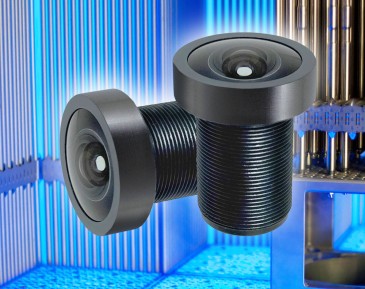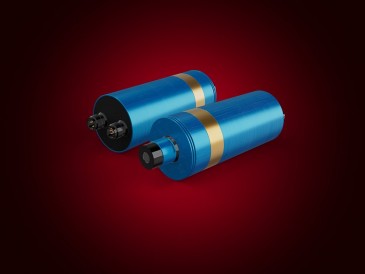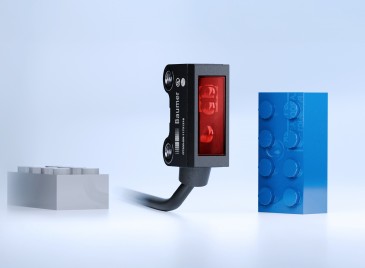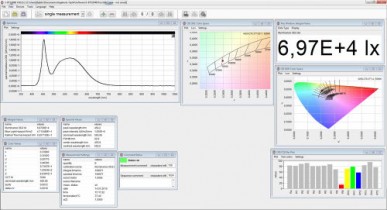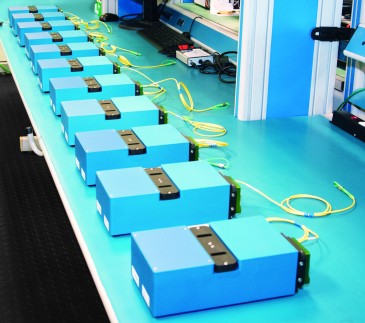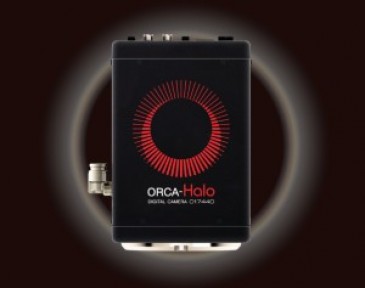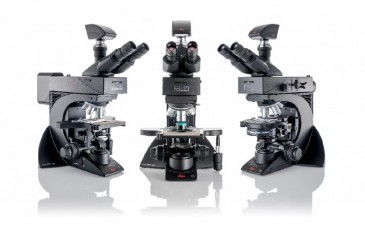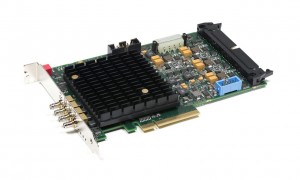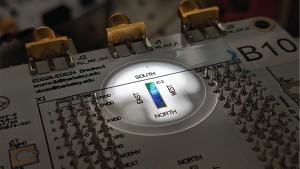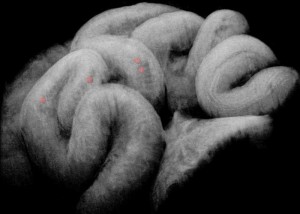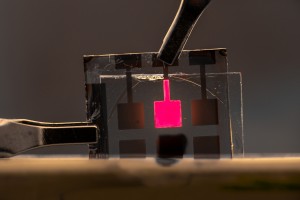
Researchers at Linköping University (LiU) in Sweden have produced near-infrared (NIR) light-emitting diodes (LED) of perovskite with a record external quantum efficiency of 21.6%.
Because perovskites have good light-emitting properties and are easy to manufacture, these materials are now increasingly explored for their use in light emitting diodes, after the prime focus in recent years had been on perovskite-based solar cells.
“Our NIR LED are based on formamidinium lead tri-iodide (FAPbI3) perovskite combined with organic passivating molecules,” says Dr Weidong Xu, postdoc fellow in the Division of Biomolecular and Organic Electronics at LiU. “The LED are solution-processed, with the emission peak at 800 nm.”
The researcher explains that although conventional III-V nitride-based LED show high efficiency and stability, they cannot be integrated into flexible modules because the material is rigid. Organic and quantum-dot LED (OLED and QLED) on the other hand have high material and fabrication costs, so they are only used in top-end smartphones and TV panels. “Metal-halide-perovskite emitters have received significant interests from both industrial and scientific community, due to the outstanding luminescence properties as well as the ultralow material and fabrication cost,” Xu notes, adding that their high color purity and high brightness potentially make them candidates for even better display panels than those made with OLED and QLED.
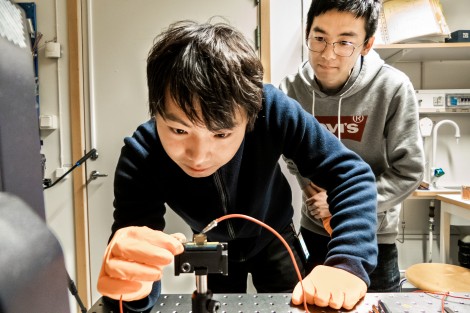
Effective defect passivation
Until now, the external quantum efficiency — the ratio of charge carriers emitted to charge carriers fed into the material — of perovskite LED has been limited by manufacturing defects, which trap charge carriers in the material. Such defects can be mitigated by adding passivation molecules, which bind to the atoms that cause defects.
The reason these perovskite NIR light-emitting diodes are now achieving record efficiency are very low trap-mediate non-radiative losses due to effective defect passivation, according to Xu.
That these light-emitting diodes are highly efficient in the near-infrared region represents a significant research advance. “It is very challenging to achieve outstanding near-infrared LED based on organic and QD semiconductors due to the intrinsic material limitations, and so far very few achievements have been made,” Xu says. “Our results have shown the great potential of perovskite emitters to be highly emissive in near-infrared region.”
Key applications for high-performance perovskite-based NIR LED
The emission band of the novel perovskite-based NIT LED peaks at 800 nm, which happens to be the biological window of human bodies. “It means the near-infrared light in this region can penetrate into our bodies with small losses,” Xu explains. “It is therefore very useful for medical and biology purpose, especially for making wearable medical devices. In addition, the NIR LEDs can also be used for optical communications.”
Impact on the design of future light-based technologies
“Our key finding is the deep understanding of defect passivation mechanism for perovskite semiconductors,” Xu says. “We believe our findings provide very useful guidance for improving the performance of all the perovskite emitters, and hence push perovskite LED toward the commercialization of full-color display, lighting and wearable electronics.”
Challenges during the research
Xu explains that the solution-processed perovskite semiconductors suffer from severe trap-mediated non-radiative losses, which is the major efficiency-limiting factor for LED. Defect passivation using organic molecules has been identified as an attractive approach to tackle this issue. However, implementation of this approach has been hindered by a lack of a deep understanding of how the molecular structures affect the passivation effectiveness. “In our work, we show that the so far largely ignored hydrogen bonds play a critical role,” the expert says. “By weakening the hydrogen bonding between the passivating functional moieties and the organic cation featuring the perovskite, we significantly enhance the interaction with defects sites and minimize non-radiative recombination losses. It therefore allows us to prepare perovskite LED with high efficiency.”
Next steps
The next stage of this research endeavor at Linköping University is to improve the device operational lifetime of the infrared LED as well as to improve the performance of other perovskite emitters, such as blue perovskite LED. “We believe the developed methods can be powerful tools to achieve these targets and finally push the perovskite LED to the stage of commercialization,” Xu concludes.
The research is detailed in the paper "Rational molecular passivation for high-performance perovskite light-emitting diodes," published in the journal Nature Photonics.
Written by Sandra Henderson, Research Editor, Novus Light Technologies Today























 Back to Features
Back to Features
